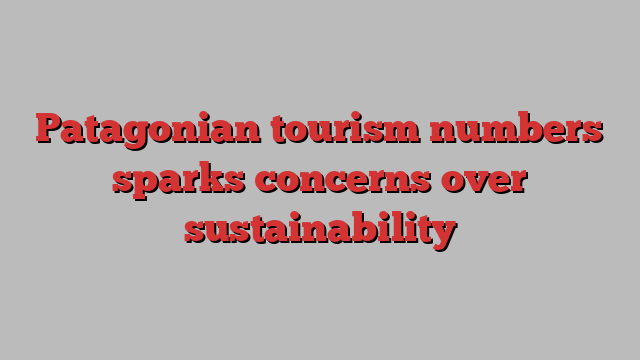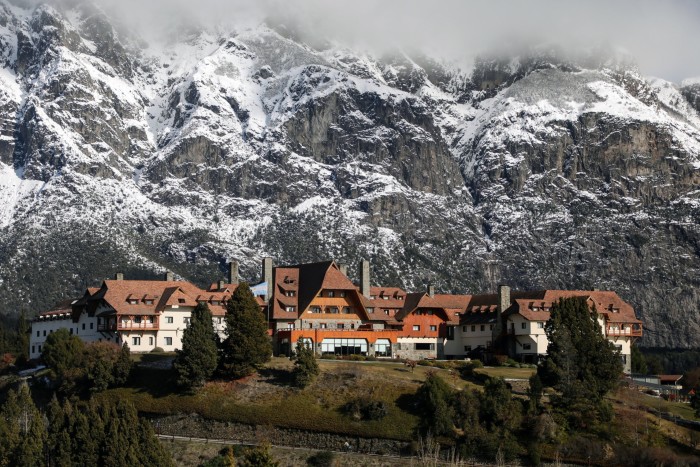
On the side of a cliff face, Venezuelan architect Luis Aparicio is putting the finishing touches to Patagonia’s latest extreme tourism option.
For up to $1,600 a night, couples can hike through an ancient wood, clamber across a cliff on narrow steel footplates, and climb into a large perspex ovoid attached to the rock. There, they can spend the night viewing the stars through the transparent roof or sprawled in a hammock on a lower level staring straight down at the valley 270 metres below.
“We want our guests to feel fear,” says Aparicio, before correcting himself. “It’s designed to expose you to heights and then your own sensations take over, all in a totally safe environment.”
The four capsules offered by Ovo Patagonia, which are open to paying guests from December, are the latest innovation for the big-spending traveller seeking a unique adventure in one of the world’s last wildernesses.
Luxury lodging is not new to Patagonia, the southern region of Argentina whose vast expanses of steppe and desert have drawn visitors as diverse as naturalist Charles Darwin and outlaw Butch Cassidy.
Llao Llao, the first of the region’s grand hotels, opened in the mountain resort of Bariloche in 1938 and is still trading on a unique blend of Alpine sophistication and Argentine hospitality. US presidents Dwight Eisenhower and Barack Obama have visited, along with a cast of international jet-setters and expert skiers.

Fourteen hundred kilometres further south, the inauguration, in 2000, of a modern airport at El Calafate created a gateway to austral Patagonia. Passenger numbers have tripled since then and are likely to hit a record of more than 3.5mn this year, fuelled by a surge in the number of post-pandemic travellers reconnecting with nature.
“Much of Patagonia used to be associated with backpackers and campers,” says Fernando Fucci, Llao Llao’s general manager. “But, now, it’s more about glamping and luxury lodges.”
Exclusive resorts have sprung up on private reserves, offering visitors the chance to immerse themselves in the landscapes and observe native creatures such as the puma and the huemul (Andean deer) in near-total seclusion.
At Eolo, named after the Greek god of winds, guests experience the isolation of a hilltop overlooking a steppe stretching away to distant mountains and lakes, as the fierce Patagonian winds whistle around the rooms. Condors swoop from the sky to feast on the afterbirth of ewes or on guanacos (a wild ancestor of the llama) unlucky enough to have impaled themselves on the barbed wire fence.
Inevitably, 21st-century human life is intruding on the once-pristine wildernesses. The spectacular Perito Moreno glacier outside Calafate, fed by the southern hemisphere’s largest ice field outside Antarctica, has begun to retreat in the past few years.
And, close to the Chilean border in El Chaltén, Argentina’s trekking capital, a boom in tourism has stretched the rudimentary local infrastructure to breaking point. Scientists discovered multi-resistant e.coli bacteria in the once crystalline De las Vueltas river after sewage swamped a treatment plant built for a far smaller population. The town has a housing crisis as well-off visitors price locals out of a limited supply of homes.
But a clutch of luxury operators are trying to show that tourism in the region can be managed sustainably. Half an hour north of El Chaltén, towards the majestic mount Fitz Roy — named after the captain of Darwin’s ship, HMS Beagle — Chilean group Explora has conjured up a low-rise, dark grey hotel that nestles discreetly in the surrounding forest of native ñire and lengua trees.
Built on a raised platform that allows wild pumas to pass below, the 20-room resort is designed as a base for treks into the mountains. It has its own sewage treatment facility, recycles waste, offsets its carbon and bans single-use plastics.
For mid-market tourists, Rewilding Argentina, a non-governmental organisation, aims to restore native Patagonian flora and fauna by promoting sustainable tourism options, such as glamping. María Mendizábal, who handles tourism development for the organisation in coastal Patagonia, believes Chaltén-style overcrowding must be avoided. “Nature has to come first,” she says. “If you don’t work with nature, the tourism loses its value.”
The government insists it is taking the lead. “Awareness is growing of the importance of sustainability criteria,” says Agustina Carmán, of Argentina’s tourist promotion agency Inprotur.
Regardless of the debate over sustainability, Javier Milei’s government’s pro-business leanings and its desire for sweeping deregulation could mean a lot more money is funnelled into Patagonian tourism.
“If Milei is successful, Argentina will become an increasingly attractive proposition for investors,” says Harry Hastings, founder and director of Plan South America, a luxury travel agent whose products include Patagonian adventures. “If there’s a clear guarantee you can get your money out, why on earth wouldn’t you invest in one of the last great wildernesses in the world, where the appetite for travel is immeasurable?”